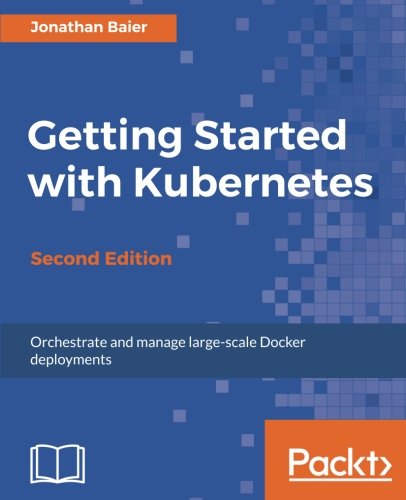Pages with tag Docker
- A simple multi-tier Node.js and Nginx deployment using Docker
- An Introduction to OpenADR - the Automated Demand/Response protocol
- Avoid 'could not be accessed' error when deploying a Service to a Docker Swarm on AWS
- Connect with SSL to MySQL in Docker container
- Correctly launch MySQL on Docker for Windows, avoiding 'Bind on unix socket' error
- Creating a Docker Swarm using Multipass and Ubuntu 20.04 on your laptop
- Creating a Docker Swarm with Raspberry Pi Zero's for easy cluster computing
- Deploying Docker images to a server without using a Docker Registry
- Deploying MySQL to get started using a Docker Compose file
- Deploying a simple multi-tier Node.js and Nginx deployment to AWS ECS
- Deploying an Express app with HTTPS support in Docker using Lets Encrypt SSL
- Directly deploying a Docker service to AWS ECS using Docker Compose
- Docker 101 Session - April 17, 2014
- Docker Inc squeezing money from Docker Desktop and other Docker tools
- Easily manage Docker containers on both local and remote Docker hosts with Portainer
- Familiarizing ourselves with Docker
- Fixing CannotPullContainerError when deploying to AWS ECS using ECR registry
- HTTPS with nginx, using Lets Encrypt, proxying to Gogs and Jenkins back-end services
- Homelab architecture, how to safely expose home-based services to the Internet
- Hosting Drupal 7 with PHP 8.2 and MySQL 8.2 using Docker
- How to install NextCloud 30.x using Docker Compose: a comprehensive guide
- How to share a Docker network between Stacks deployed to a Docker Swarm
- Implementing HTTPS with Docker services on AWS ECS using Docker Compose
- Inspecting a Docker container filesystem without starting a container
- Installing Caddy as a homelab reverse proxy, exposing home-based services to the Internet
- Installing Docker Engine or Desktop on Ubuntu, macOS or Windows
- Installing Dockge, a lightweight Docker management tool
- Installing Gitea for self-hosted Git service, replacing Gogs
- Installing a self-hosted Docker Registry to aid Docker image development
- Introduction to Docker - Oct 2, 2013
- Launch both OpenLEADR VTN (top node) and VEN (end node) using Docker for development
- Learn to use Docker for application development and deployment
- Make your own Raspberry Pi git repository server with Gogs and Docker
- Manage Letsenrypt HTTPS/SSL certificates with a Docker container using Cron, Nginx, and Certbot
- Managing Containers with Docker 101 Session - April 20, 2014
- Moving Docker's files to a custom location
- Multi-stage Docker image builds, minimizing final image size, supporting multi-architecture containers
- Replacing Docker Desktop with Multipass, to avoid Docker Desktop fees
- Run Linux/X11 apps in Docker and display on a Mac OS X desktop
- Running MongoDB with Docker and Docker Compose
- Scheduling background tasks using cron in a Docker container
- Secure your infrastructure with Docker and Puppet
- Self-hosted DMARC report viewer to aid your anti-SPAM effort
- Self-hosted Docker infrastructure in home or office using low-cost computers like Intel NUC
- Self-hosted metasearch engine protects against tracking from Google, Bing, etc
- Self-hosted photo gallery and backup using Immich in your homelab
- Set up MySQL using Docker on your laptop
- Set up PHPMyAdmin and Wordpress Docker containers using existing MySQL
- Setting up Docker for an easy-to-configure self-hosting environment
- Solve 'Drive has not been shared' error with Docker on Windows
- Terraform deployment of a simple multi-tier Node.js and Nginx deployment to AWS ECS
- Terraform deployment on AWS ECS a multi-tier Node.js and Nginx system using Service Discovery
- Understanding MySQL the Access Denied error in or outside a Docker container
- Using Docker to host ARM toolchain to cross-compile C code
- Using NGINX, Lets Encrypt and Cron in Docker to manage HTTPS/SSL certificates for multiple domains
- Using Podman to run MongoDB on MacOS mounting data directory from MacOS host
- Using SSH to remotely control a Docker Engine or Docker Swarm in two easy steps
- Using multiple databases and PHPMyAdmin in a single MySQL Docker instance
- Wordpress local development environment with Docker and Docker Compose on your laptop
- Wordpress production deployment with Docker Compose









